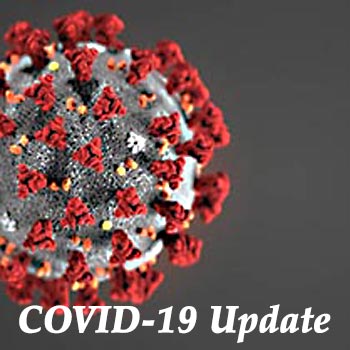by Jondi Gumz
As of March 25, Santa Cruz County reports 25 confirmed COVID-19 cases and no deaths, California 2,535 cases and 53 deaths, the U.S. 64,500 cases and 908 deaths, and worldwide, 466,000 cases, 21,000 deaths — 7,500 in Italy, 3,600 in Spain and 3,100 in China — and 113,000 recoveries.
 Santa Cruz County is one of seven counties in the San Francisco Bay Area under a March 16 “shelter in place” order to slow the spread of the coronavirus.
Santa Cruz County is one of seven counties in the San Francisco Bay Area under a March 16 “shelter in place” order to slow the spread of the coronavirus.
Celebrities have tested positive: Former Golden State Warrior Kevin Durant now with Brooklyn Nets, Rudy Gobert of the Utah Jazz , Sean Payton, head coach of the New Orleans Saints, actors Idris Elba and Daniel Dae Kim, singer Charlotte Lawrence, musician Andrew Watt, Miami mayor Francis Suarez, Democratic Congressman Ben McAdams of Utah, Republican Congressman Mario Diaz-Balart of Florida, Prince Albert of Monaco, and Sophie Trudeau, wife of the Canadian prime minister.
Which leads to the question many people have: How do you get tested?
Here is the answer from Santa Cruz County spokesman Jason Hoppin: “There are two paths for testing: public health system and private payer system.
“Only symptomatic sick patients under care of a physician are getting tested. You are at very low risk of transmitting the virus if you are asymptomatic.

Masked staff at the Sutter Health clinic (also known as Palo Alto Medical Foundation) in Scotts Valley screen patients Friday for COVID-19 with a special tent set up in the parking lot. • Photo Credit: Jondi Gumz
“The issue with tests right now isn’t the number of tests available but lab capacity. For public health tests, it takes about 48 hours for the results to come back. Those tests are conducted at public labs out of Santa Cruz County. Santa Clara county has one lab and that is the one we usually use, although there are other labs available.
“Private labs take 5 to 6 days to turn the test around. Turnaround time will improve as we go forward, and many top medical schools are volunteering their labs to do tests too. Regardless of your path, the federal government has passed legislation making tests free for everyone.
“Even using the strict criteria of meeting the symptom pattern and being under care of a doctor, five out of every six tests in Santa Cruz County come back negative.
“At this point, getting tested helps document the spread of the disease but does nothing to prevent the spread.
“I think a lot of people are misunderstanding this point. It’s out in the community, and quarantining contacts of confirmed patients no longer helps. It’s assumed to be too widespread already, and we have moved past containment and are focusing on mitigation. Without immunity or a vaccine, the only way we have to interrupt diseases is by social means.
“That is why you’ve seen the extraordinary measures this week by public health officers throughout the Bay Area to implement a shelter in place order. We haven’t seen anything like this in the post-WWII era.
“This will have long-lasting impacts on the community, and despite being only at the very earliest stages we are already hearing about layoffs, and people will lose income. We’re a service economy, and this will fall on service workers the hardest.”
Resources
County of Santa Cruz call center answering questions about the COVID-19 outbreak: (831) 454- 4242 between 8 a.m. and 6 p.m., Monday-Friday.
To read the shelter in place order, track the number of local cases, and view see answers to frequently asked questions in English and Spanish and guidance on how to protect yourself and your family, see www.santacruzhealth.org/coronavirus
Community Foundation Santa Cruz County has created a fund to raise money for public health and to support vulnerable residents. Donations can be made at https://www.cfscc.org/donate/COVID.
A group of community volunteers has established a tech support clearinghouse for students engaged in remote learning or residents working from home during the shelter-in-place order. Volunteers are welcome. Visit https://www.cruz.one
•••
For Updates
www.cfscc.org/updates/3-ways-to-help-santa-cruz-countys-most-vulnerable
State numbers: www.cdph.ca.gov/Programs/CID/DCDC/Pages/Immunization/ncov2019.aspx
Worldwide numbers: www.arcgis.com/apps/opsdashboard/index.html#/bda7594740fd40299423467b48e9ecf6 or www.domo.com/coronavirus-tracking
Resources for employers, schools community and faith-based organizations and travel recommendations: www.cdc.gov/coronavirus/2019-ncov/index.html
